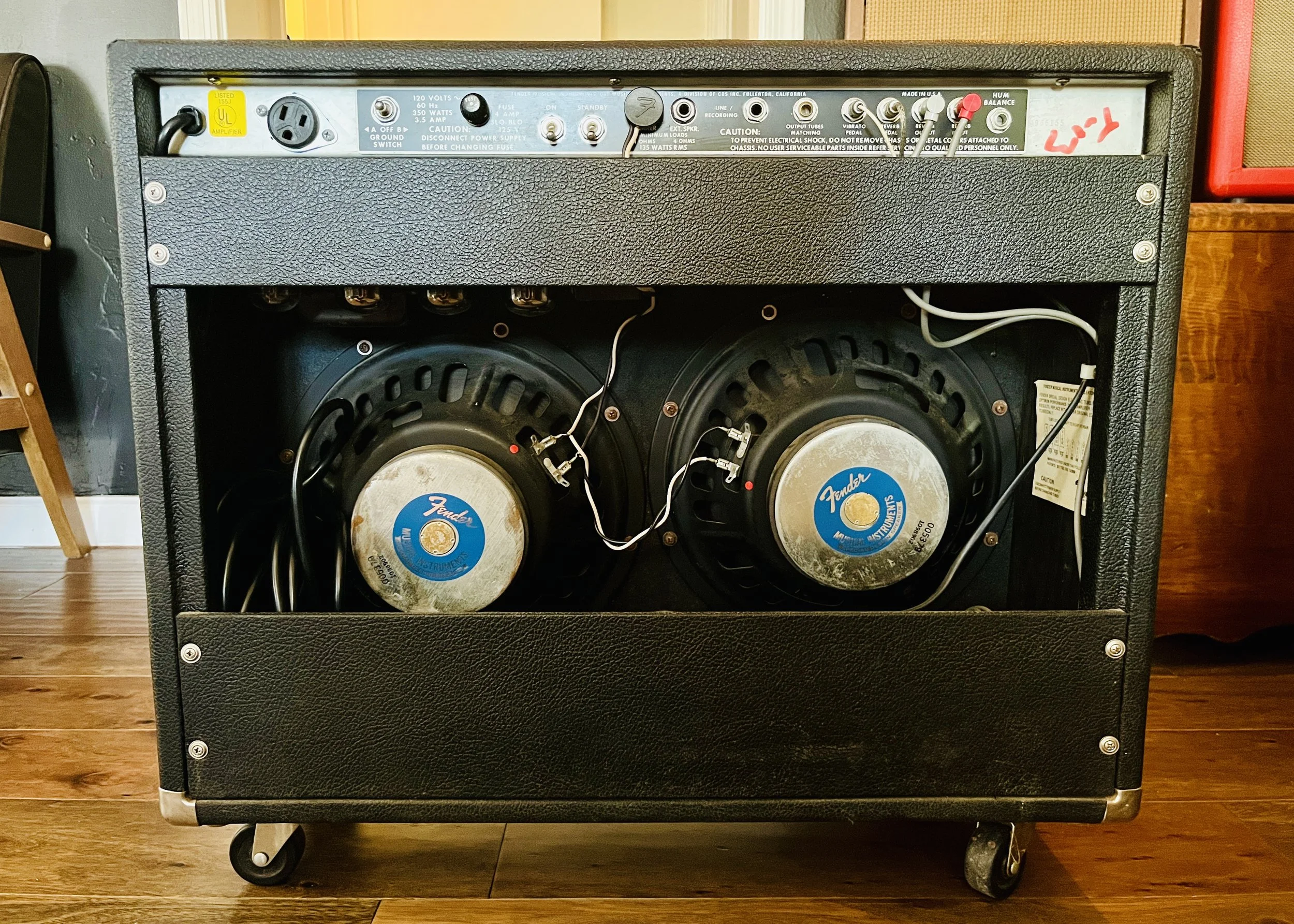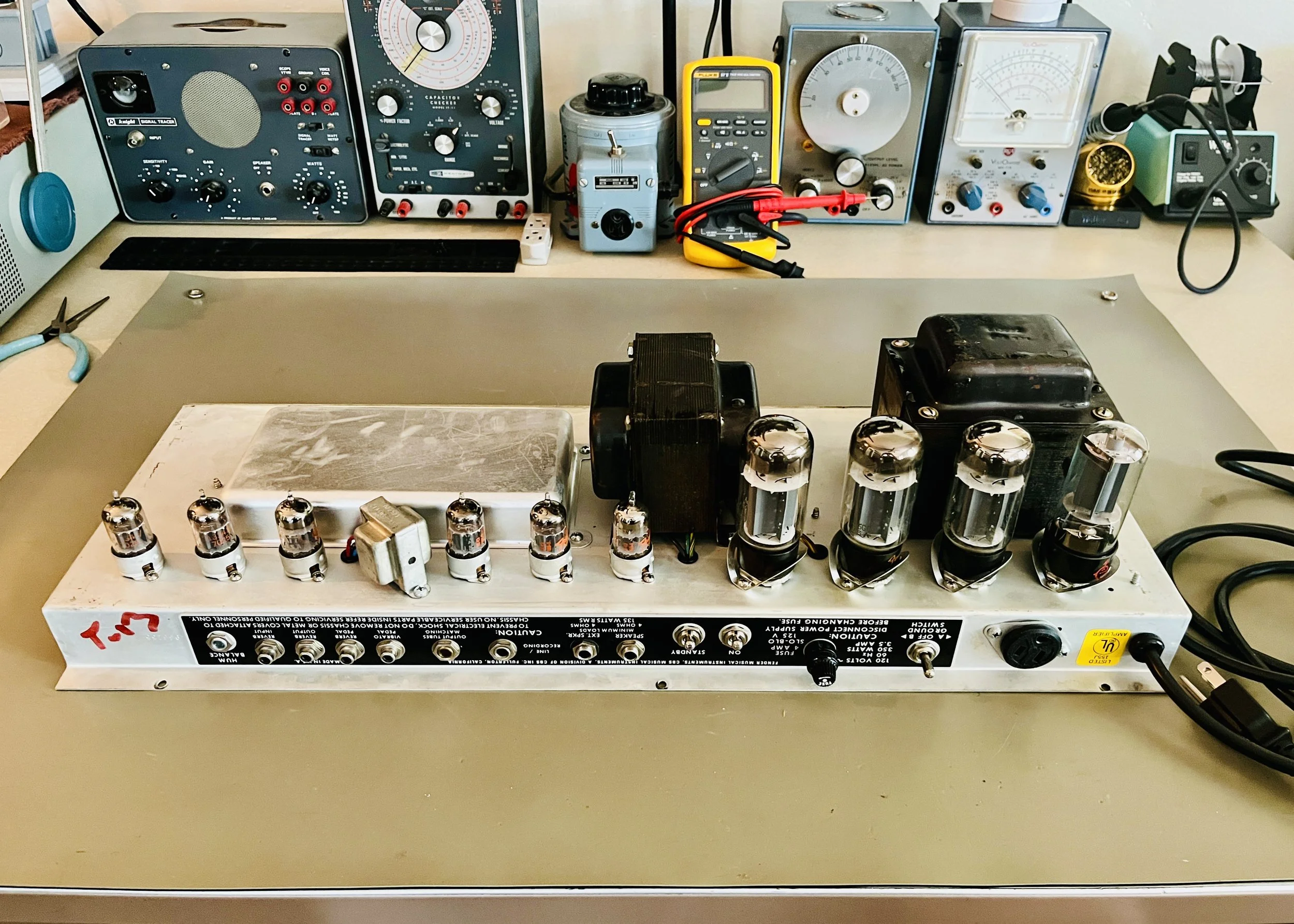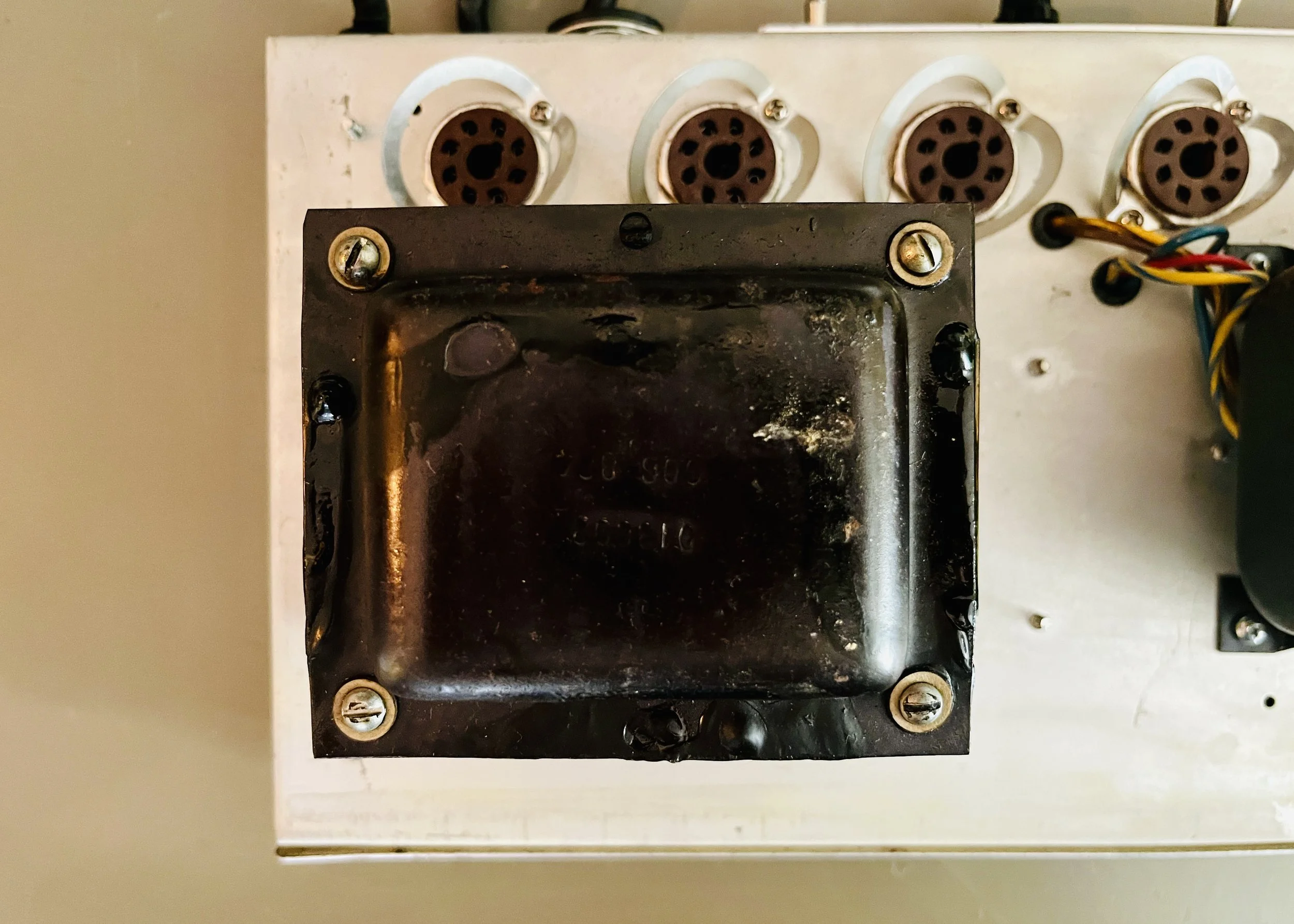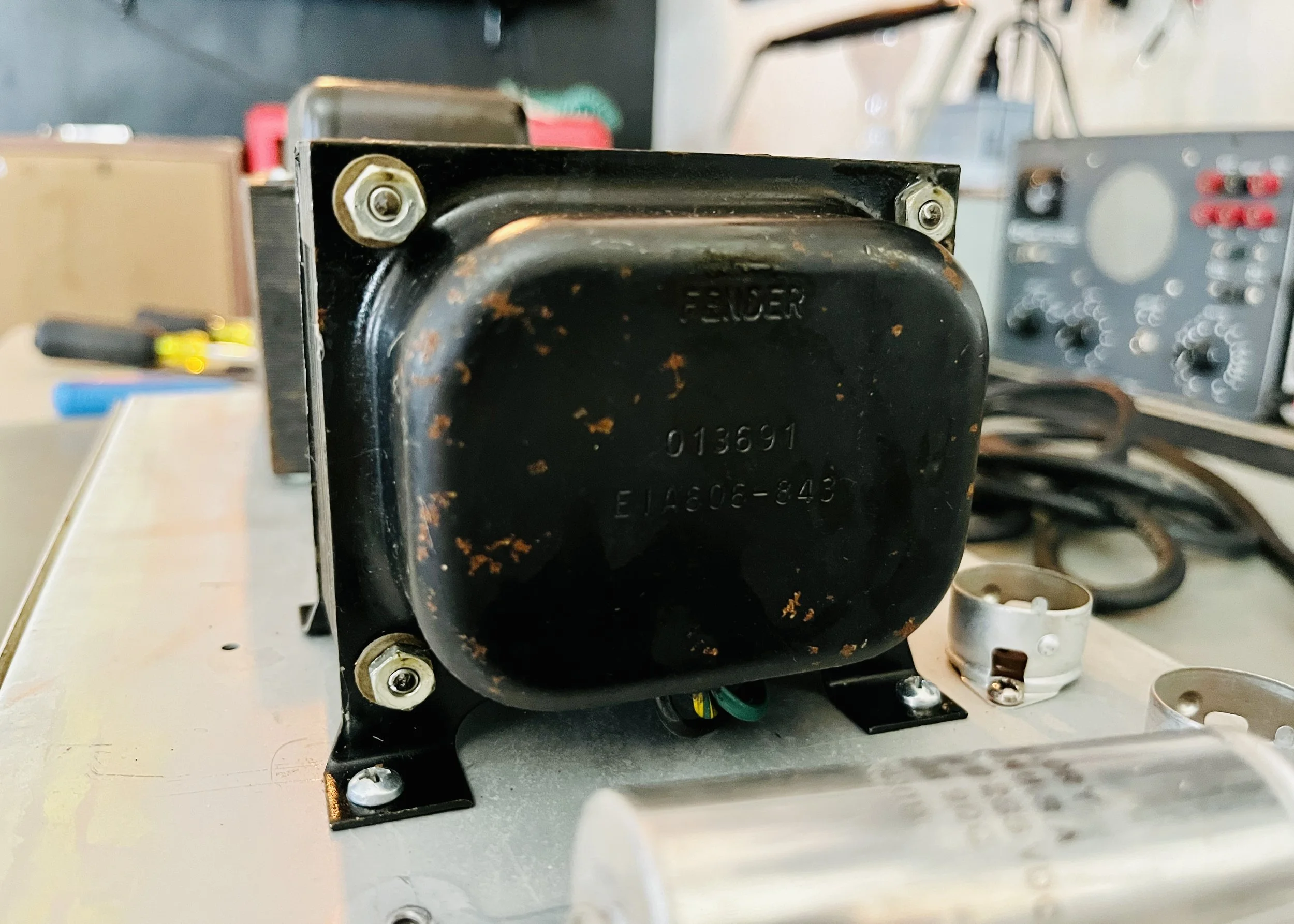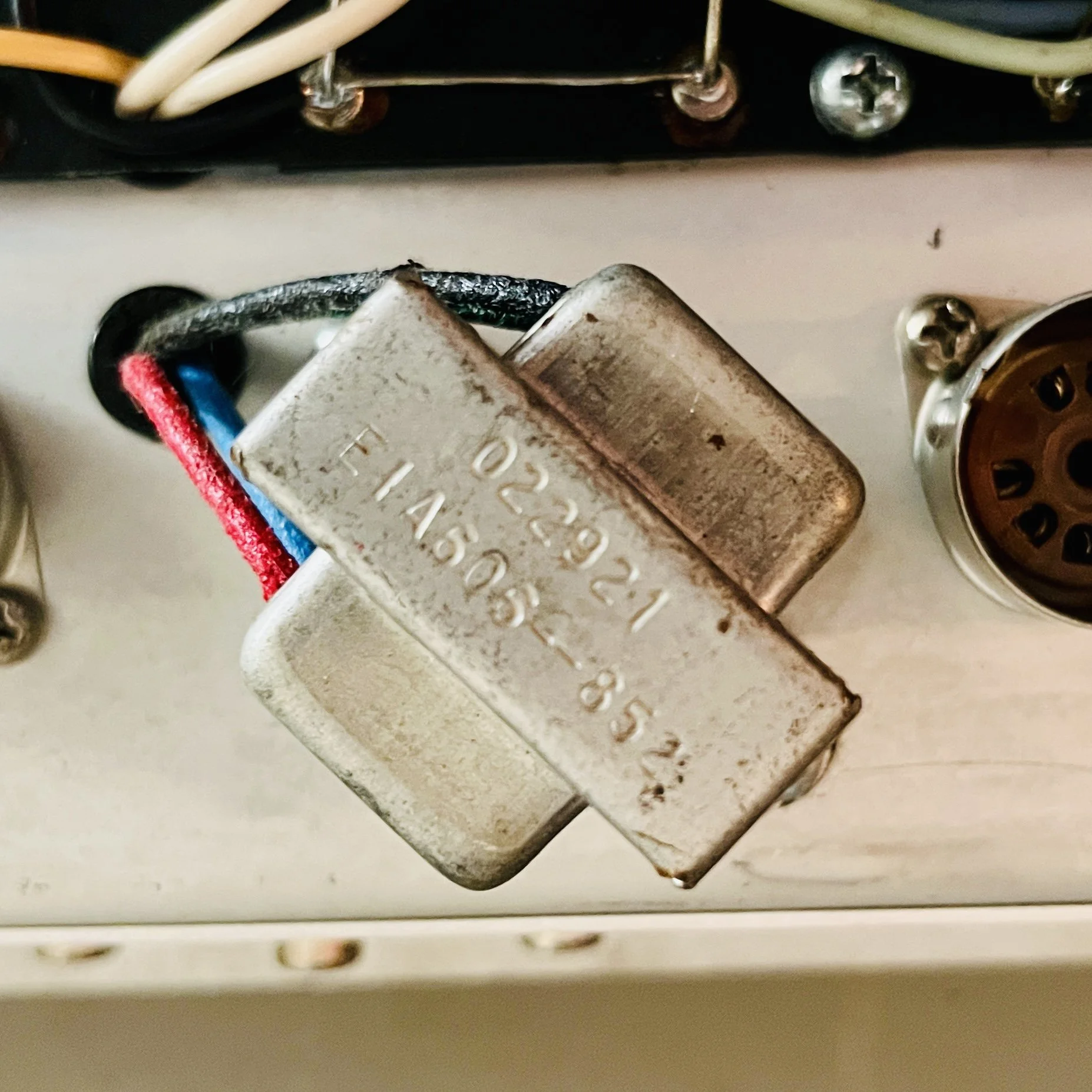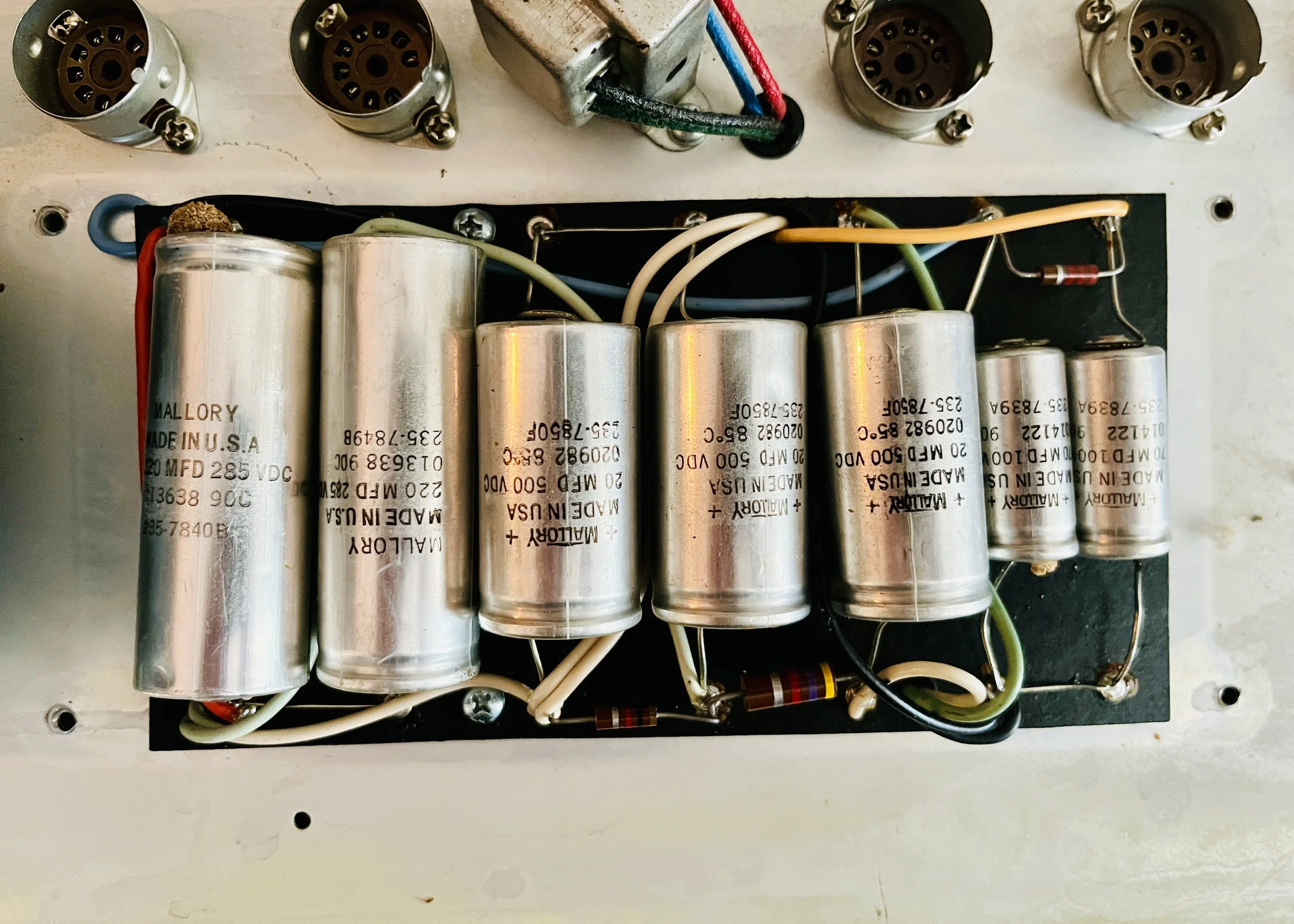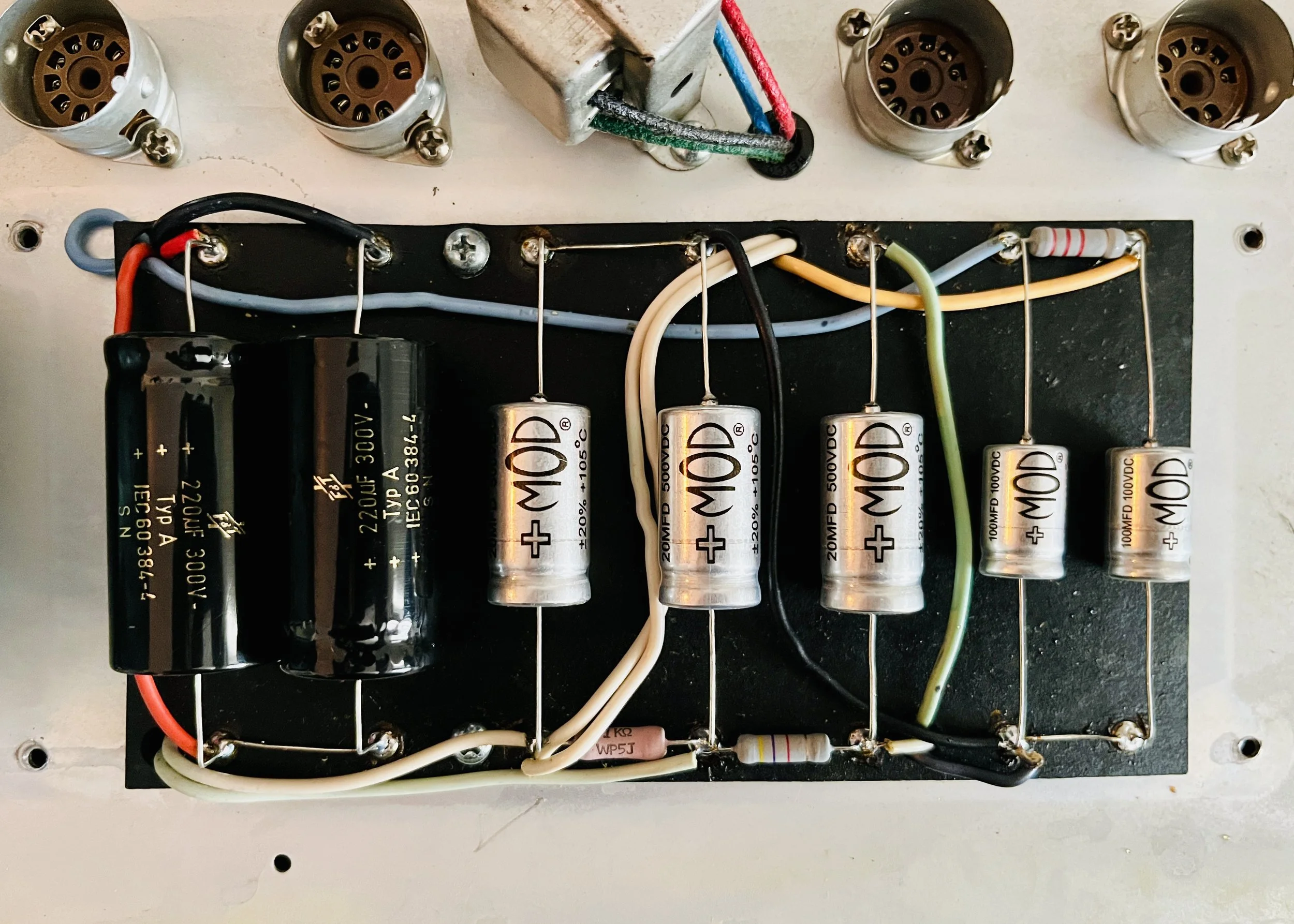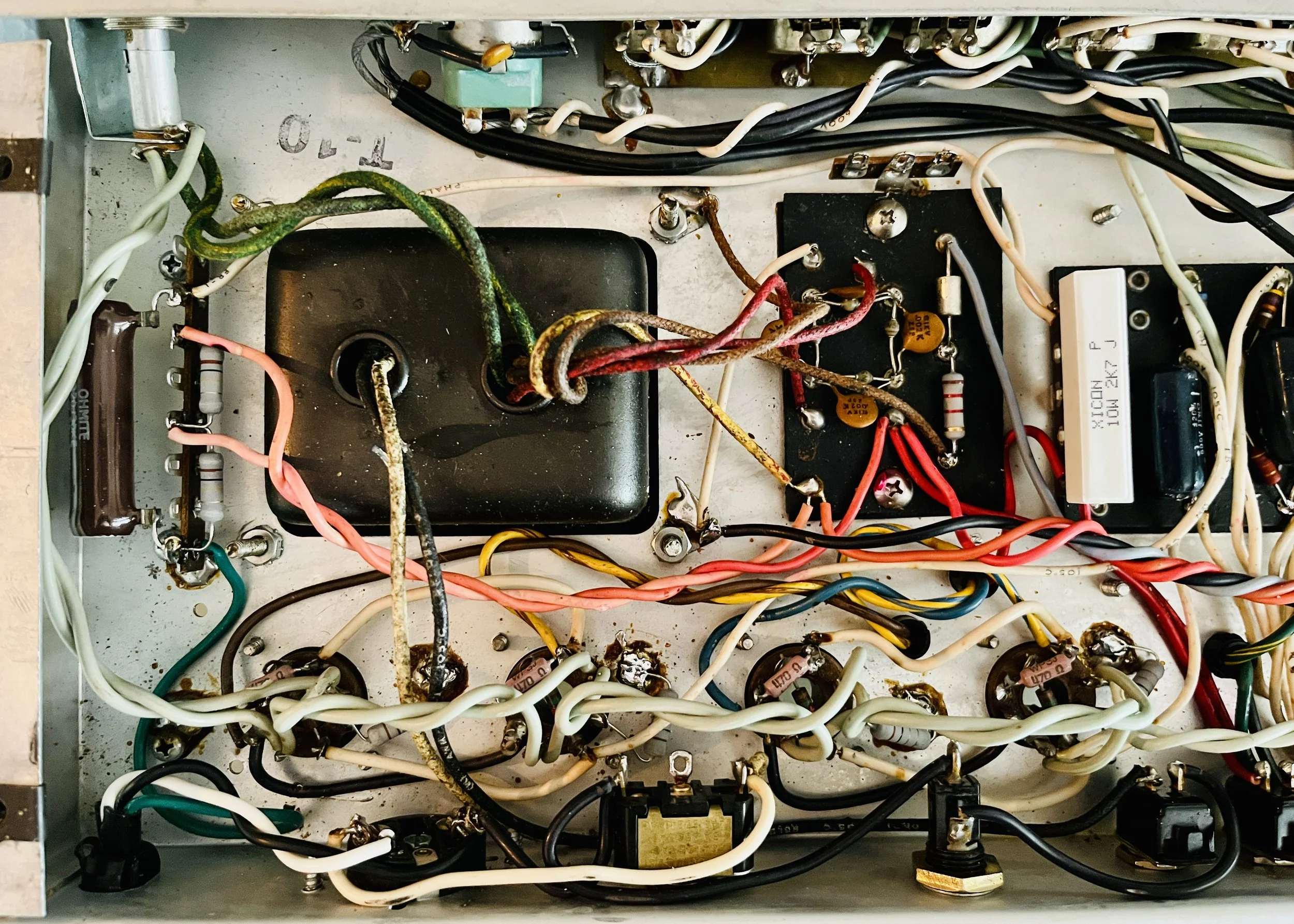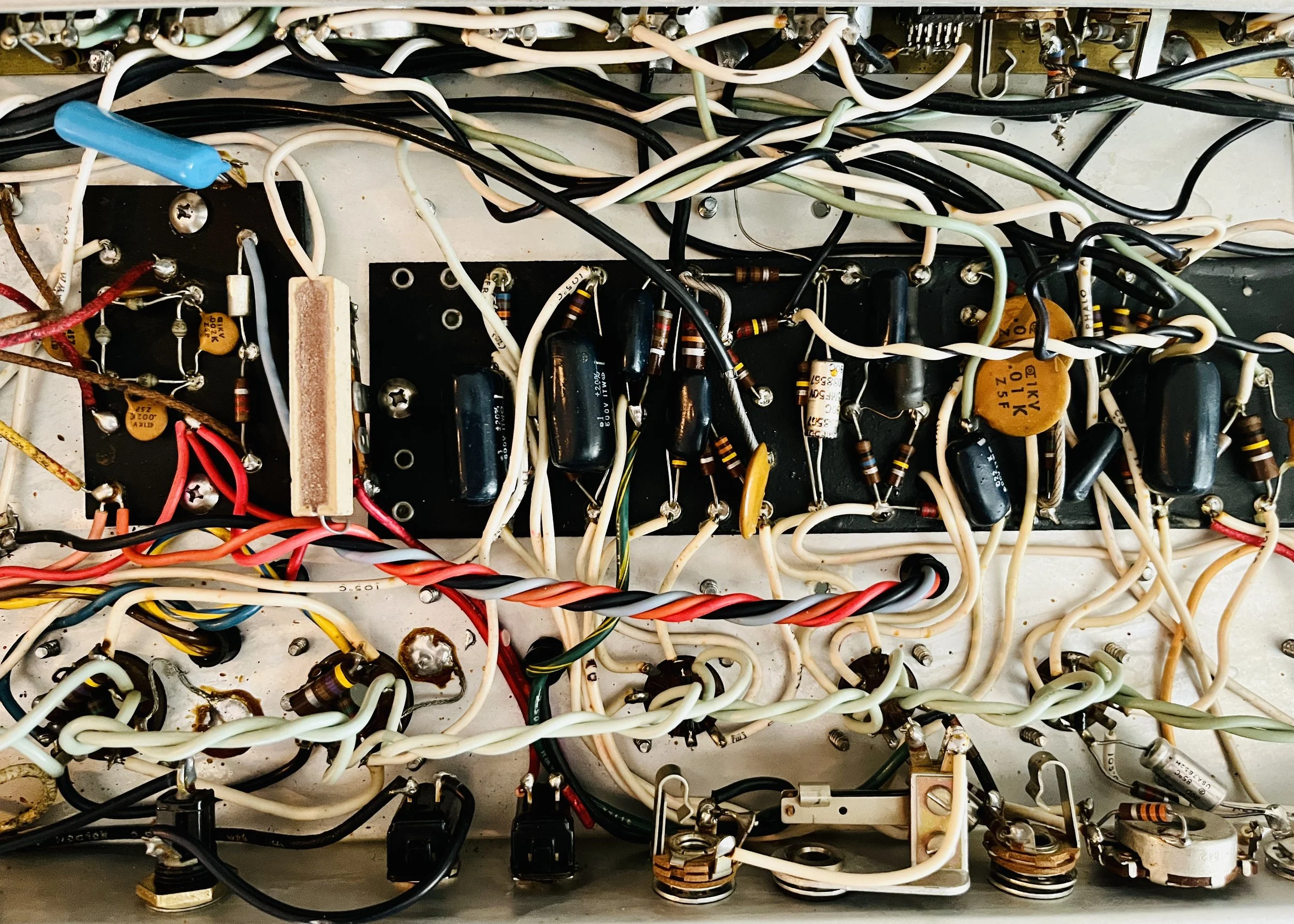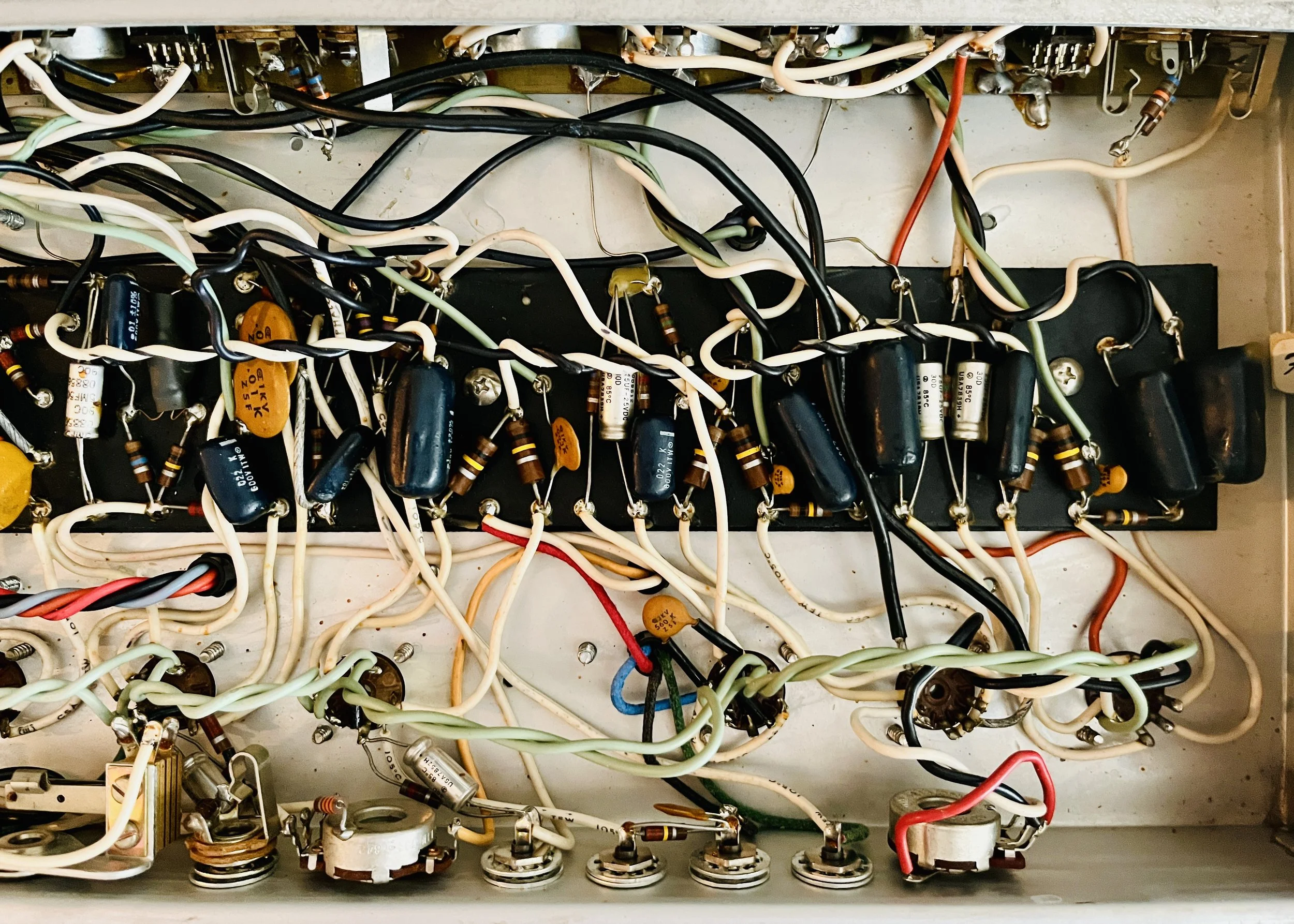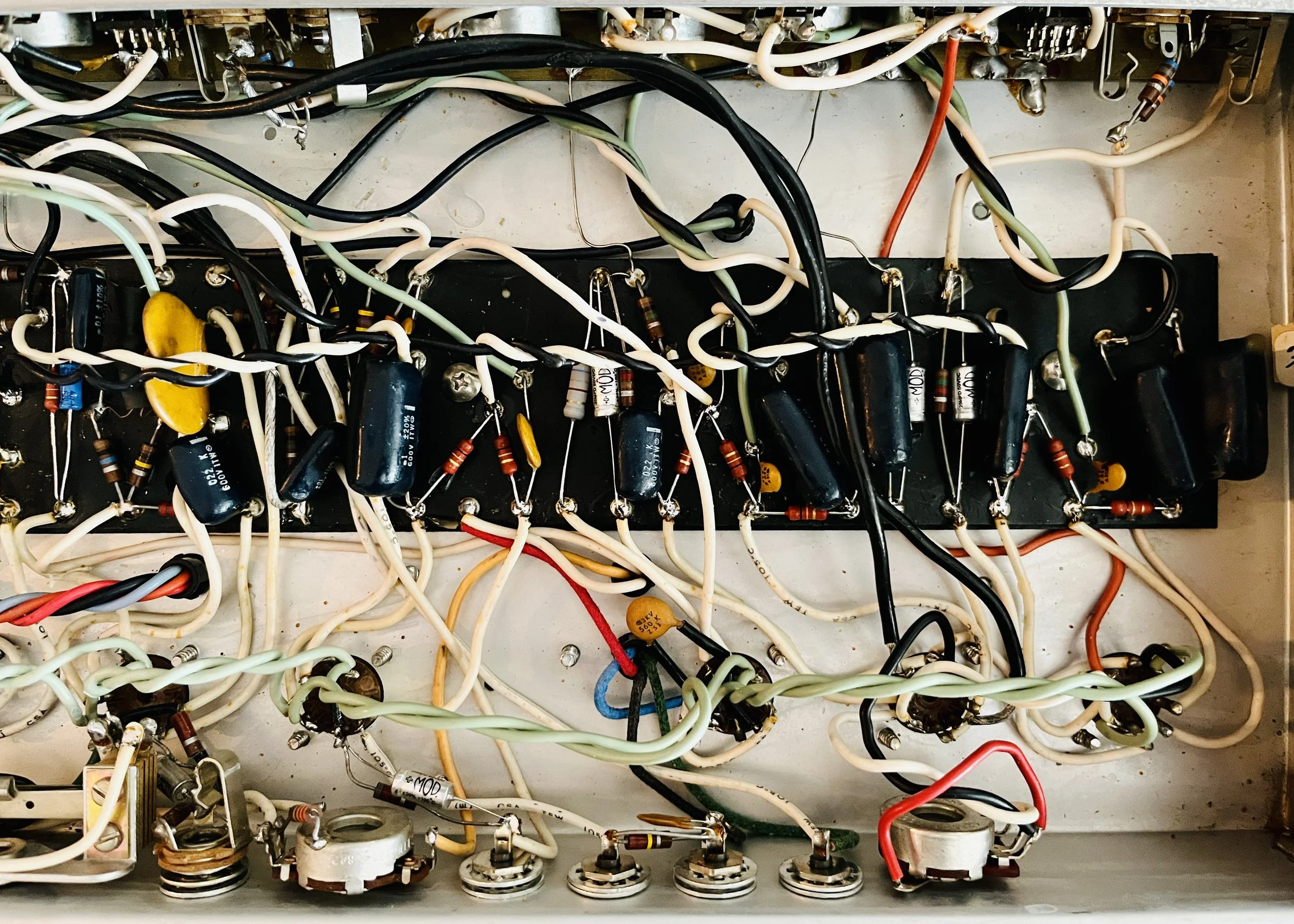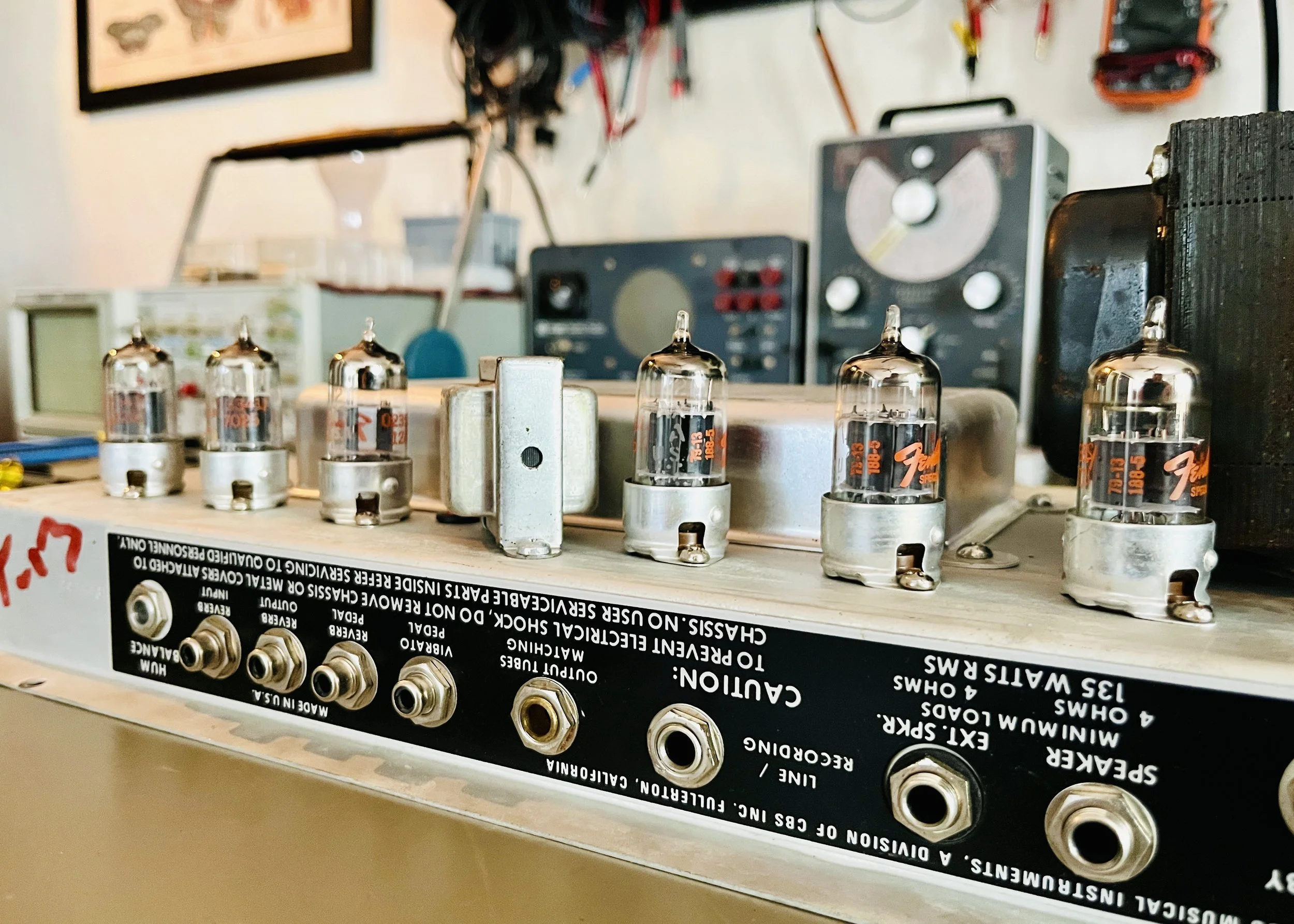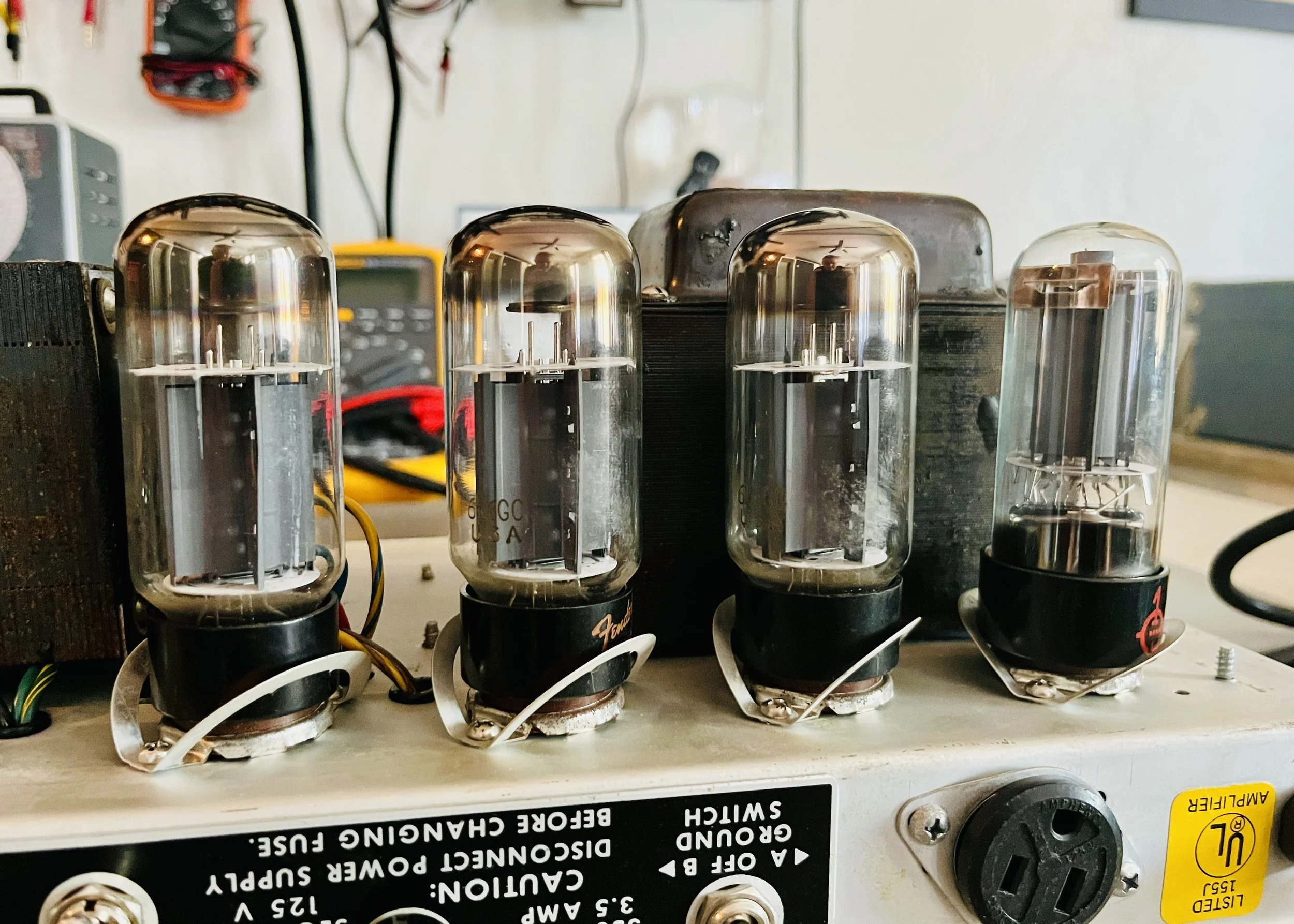1979 Fender Twin Reverb 135W UL
There are many versions of the Twin Reverb that Fender made during the 1960’s and 1970’s. All of them were very popular with musicians then and now and consequently the Silver-Panel Fender Twin Reverb is the most common vintage amp that I get in. This 79’ Twin was made after the buyout of Fender by CBS in 1968 and is the 135 Watt Ultra-Linear version, the tone of which is often debated and criticized compared to the older revisions. There are a lot of circuit changes here compared to even the most recent previous revision, the non-UL Silver-Panel Twin Reverb (CBS 100W MV), that make this amp cleaner, and to many peoples ears, colder and harsher. The main change being the Output Transformer going from standard Pentode operation to Ultra-Linear operation, which is a type of circuit design straight out of the Hi-Fi world of audio engineering. Designed for maximum clean efficiency Ultra-Linear mixes the best qualities (in engineering terms) of Pentode and Triode operation of the output tubes, which makes the power scaling of the output section less logarithmic and more linear, hence the name. This translates to much cleaner tone with almost no distortion available at all. Ultra-Linear’s big advantage is it’s extremely high output power compared to either Triode or Pentode operation, meaning instead of 80-100 Watt RMS from a quad of 6L6GC’s a UL circuit can wrangle 135 Watts RMS out of the same tubes. These can be great sounding amps however and have all the standard preamp, EQ, and effects options of most Twin Reverbs. Country and Jazz players really took to these Ultra-Linear models and a lot of Fender Rhodes electric piano players as well. These amps got a bad rap largely from rock guitarists disappointed with the lack of warmth or overdrive.
This amp came in to my shop in completely original condition. The amp did not work well upon arrival, it had leaking filter caps, heat damaged power resistors, and the tone was dull. This one needed a full restoration including a cap job for all electrolytics, new power dropping/screen/misc. resistors, a 3 prong AC cord, power tube biasing, cleaning, and tube socket re-tensioning.
Amp was completely restored. All filter/bias/bypass caps were replaced with upgraded voltage and temperature rated F+T/MOD/VISHAY brand electrolytics. New 20 Watt Wire-wound/10 Watt Wire-wound/5 Watt Cement/2 Watt Metal Oxide power dropping resistors were installed due to the original parts showing heat damage, and for better reliability and lower noise floor. The cathode resistors for V3 and V6 were replaced with 2 Watt Metal Oxide type units for preventative maintenance. All plate resistors were replaced with 2 Watt Reduced Mass Metal Film type units for preventative maintenance, reliability, and low-noise. All screen resistors were replaced with 3 Watt Cement 470 ohm type units for same reasoning. A new 3AG Fuse was installed as the original was not rated correctly. A new 3 Prong AC cord was installed to replace the worn out original unit.
The original tubes all tested good. This was the tube compliment: V1/V2/V4/V5 = GE 12AX7, V3/V6 = GE 12AT7, V7-V10 = SYLVANIA 6L6GC Matched Quad (One of these tubes was a NATIONAL ELECTRIC brand but because it perfectly matched the other 6L6GC tubes it was kept). The 6L6GC's Fixed Bias was set to %50 Class AB UL Plate Dissipation with a B+ of 465VDC. The tube sockets were all re-tensioned to stop loose tubes from potentially falling out and were then treated with De-Oxit to remove/prevent corrosion. The pots were sprayed out and the amp was cleaned inside and out. Amp now functions well.


